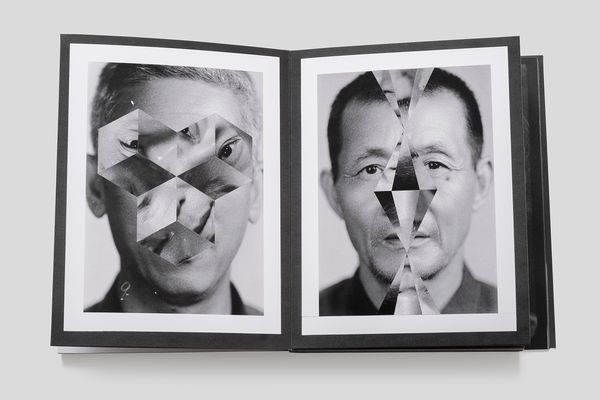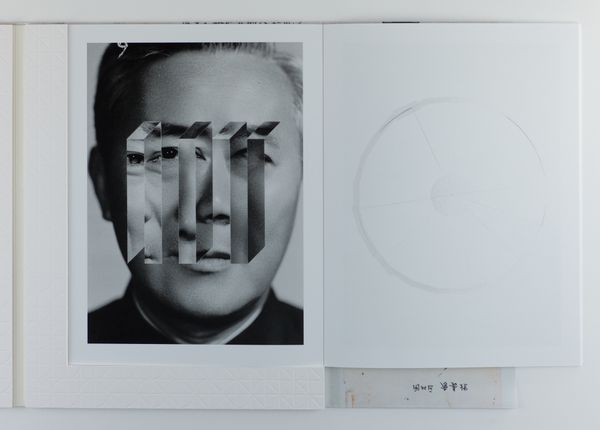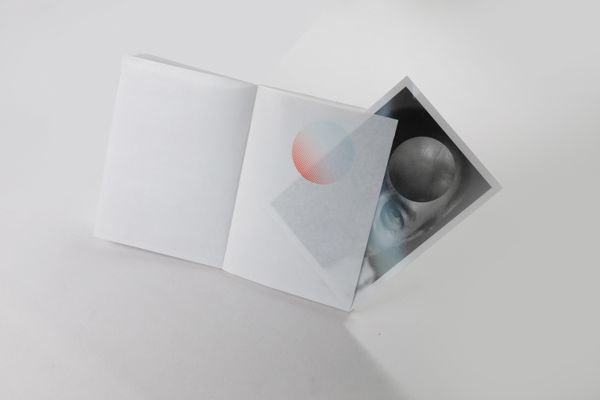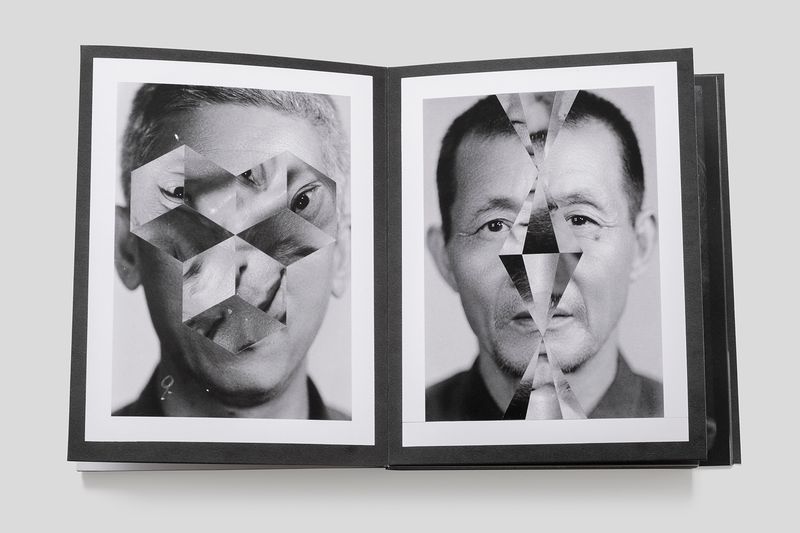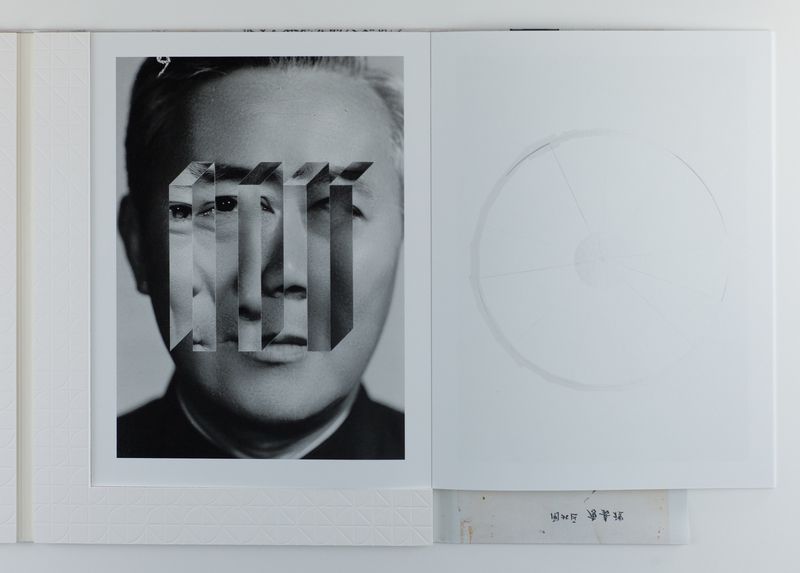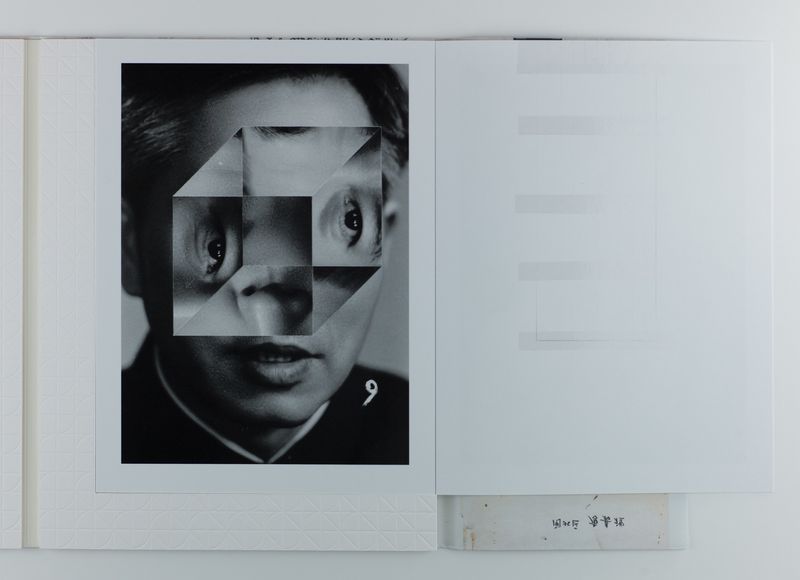Kensuke Koike, Collaborations, and Beijing Silvermine
-
Published18 Jan 2019
-
Author
In their triple publication, No More No Less, Kensuke Koike and Thomas Sauvin combine collaboration, found imagery, and delicate collage to reinvent an archive from the early 1980s.
In their triple publication, No More No Less, Kensuke Koike and Thomas Sauvin combine collaboration, found imagery, and delicate collage to reinvent an archive from the early 1980s.
Pleasure is not a word that is often associated with photographic art. We agonise over ethics and representation, we ponder at the heritage of images, at where they sit, at what they sit next to, at the capitalist machine they are almost inevitably part of.
If you care about ethics, representation, and issues of siting and distribution, it can be a miserable life looking at photographs, but every now and then, somebody will come along who doesn’t quite belong to that way of seeing, that way of thinking. Kensuke Koike is one of those people, a man who snips and slices original prints into collages that are entirely his own. The works he makes, the cuts he makes on old photographs with his father’s blades and cutters, are embedded with a pleasure that is at odds with the intensity and obsession with which he cuts.
His collages, his videos, and his three dimensional renderings (best seen on his Instagram account) are examples of work that make people smile, murmur admiring comments to, and simply coo with delight in a way that is quite beautiful. His are pictures of pure visual pleasure and the response they elicit is from the discourse of pleasure.
It’s fitting then that his first major publication, No More No Less, should mirror the delightful playfulness he shows in his work, not just in the viewing of the publication, but in its making, its launching and its eventual showing. The first thing you need to know is that No More No Less is three books, not one. The second thing is that it is a collaboration between Kensuke Koike and Thomas Sauvin, archivist and salvager of images from the negative wastelands for Beijing Silvermine.
The basic story is that Sauvin invited Koike to collaborate with the Beijing Silvermine archive (it’s an archive of negatives rescued by Sauvin from recycling for silver in Beijing, hence the name) to make a new series of collages. Koike looked, initally liked nothing, then spotted a series of simple black and white studio headshots made by a photography student.
It was these images that became the basis for No More No Less. In his studio, Koike worked tirelessly to create a series of inventive images where nothing has been added, nothing taken away; things are swapped, shifted, flipped, dissected, created from parts and kaleidoscoped but never is anything added or taken away.
These images were exhibited in China, people loved them, a host of publishing deals fell on Sauvin’s digital doormat, and Sauvin turned them down. Instead, Sauvin and Koike chose three publishers, theM éditions from France where Sauvin lives, Skinnerboox from Italy where Koike lives, and Jiazazhi from China where the original prints were made.
Scans of the original negatives, along with Koike’s collages and other supporting materials, were sent to the three publishers with instructions to make a book with no outside communication. The books were launched at Paris Photo, with each edition completely unseen by anyone outside the individual publishers.
So that’s a beautiful process to begin with. Even more beautiful are the books that emerged. The Jiazazhi is, by a couple of euros, the most affordable of the three, its slipcase containing a delicate thin-papered book object that falls neatly into the hand. The book is bound with red thread, open the pages and there is a thing of beauty inside. At the front, there’s a reproduction of the original prints in the form of a slipped in mini-catalogue, ensuring all the information is available to the viewer, ensuring you can see where the process originated. Turn the pages, and it turns into an album of sorts, with the folded, waxy paper having echoes of the glassine sleeves negatives can be stored in. The effect is accentuated by these folded pages being open opposite the spine and at the top, giving room to slip tipped in prints of Koike’s images. To see the images you pull them out, Koike’s collaged version on one side, Koike’s sketch marks on the other. The individual nature of the image takes over here, and also leads to the temptation to mount, frame, and hang. On the actual book pages, the pattern drawn by Koike’s knife is marked out in riso-red. You want to know how he made his collages, the cuts he made, this is where you go. You take a picture out and want to know where it belongs, this is also where you go.
The Skinnerboox edition of No More No Less also comes in a slipcase, a fragmented type spelling out the title and author on one side, a negative image on the other. This is a heavier book, a sturdy book, its pages folded into a double-sided concertina that very easily opens to reveal Koike’s pictures. In that sense it’s the most functional book which again includes the original images, including the hand scrawled verso images. Because of the ease of seeing, this is the most book-like book.
Unfold the concertina a bit more and it then opens up to reveal the sketch marks Koike made for slicing up the picture. Negative versions are also included in the book, a nod back to where these images actually came from. If the Jiazazhi version is interested in replicating the storage process of this archive, then Skinnerboox is interested in the chemical processes of the archive, the negatives representing a return to the original chemical and physical foundations of the images.
Both of these editions are in the pre-agreed edition of 400 and are at an affordable price. The theM éditions version is also in an edition of 400, but the outstanding production values are reflected in an accompanying price rise. It’s pricey.
Kensuke Koike and Thomas Sauvin, spread from the book, No More No Less. Published by theM éditions
There’s no slipcase here, instead it comes in a plastic bag through which you can see the book wrapped in its paper cover featuring the original photographs, versos and rectos battling it out for supremacy. Open the book and you find a heavy off-white engraved card cover from which Koike’s collages come at you from both sides, the pages opening from the spine; it’s a double book then. It’s super simple but super clever, the high-gloss pages marked with marks to mirror the cuts that Koike made. Here you can feel the physicality of Koike’s labour; he’s a perfectionist, with each of the original collages taking him a day to make. On the back you can see the facsimile of Koike’s cutting marks, but overprinted with high-gloss varnish that references the taping that may have held his collages together.
With their emphasis on the storage process, the chemical processes, and the physical process, this triptych of books amounts to a fortuitous investigation of the more functional aspects of the archival process, and how it can be reinvented in contemporary book form.
Ultimately however, what is so beautiful about this process is that the delicacy, directness, wit and intelligence (because there are things happening in Koike’s collages that operate on geometric, psychological, and neurological levels) is contained within the images and the images have been recognised as supreme by each of the publishers. Koike’s collages are held back in some places, you have to work for them a little through folds, through flips, through paper, but that allows you time to linger on each, and each of the books are made to be a pleasure to touch, to open, to see.
No More No Less is the most pleasurable photobook that I can remember being published; it’s books of pleasure to go with pictures of pleasure, all fitting into a process of pleasure (as an outside observer I’m ignoring quite a lot of pain here I realise) that started with Thomas Sauvin buying a job lot of student photographer negatives in China, continued to Kensuke Koike’s dedicated cutting in a studio near Venice, and ended in Paris with this three-way publication.
--------------
No More No Less by Kensuke Koike and Thomas Sauvin
Skinnerboox // Designed by Federico Carpani // Edition of 400 //15 x 20 cm
76 pages // One folded sheet plus two booklets // €40 // BUY HERE
~
TheM éditions // Designed by Les Graphiquants // Edition of 400 // 21 x 27 cm
26 images // Hardcover // €95 // BUY HERE
~
Jiazazhi Press // Edition of 400 // 15 x 21 cm
48 pages // Paperback // Softcover // €40 // BUY HERE
--------------
Kensuke Koike is a Japanese artist currently living and working between Venice, Italy and Šempas, Slovenia. In his work, Koike looks to cut, rip, disassemble, and then reassemble photographs, creating new images with independent lives of their own. Follow him on Twitter and Instagram.
Thomas Sauvin is a French photography collector and editor who currently lives in Beijing. Since 2006, he has been working exclusively as a consultant for the UK-based Archive of Modern Conflict, an independent archive and publisher, for whom he collects Chinese works, from contemporary photography to period publications to anonymous photography. Follow him on Instagram.
Colin Pantall is a photographer, writer and lecturer based in Bath, England. His latest book, All Quiet on the Home Front, focuses on family, fatherhood and the landscape. Follow him on Twitter and Instagram.
